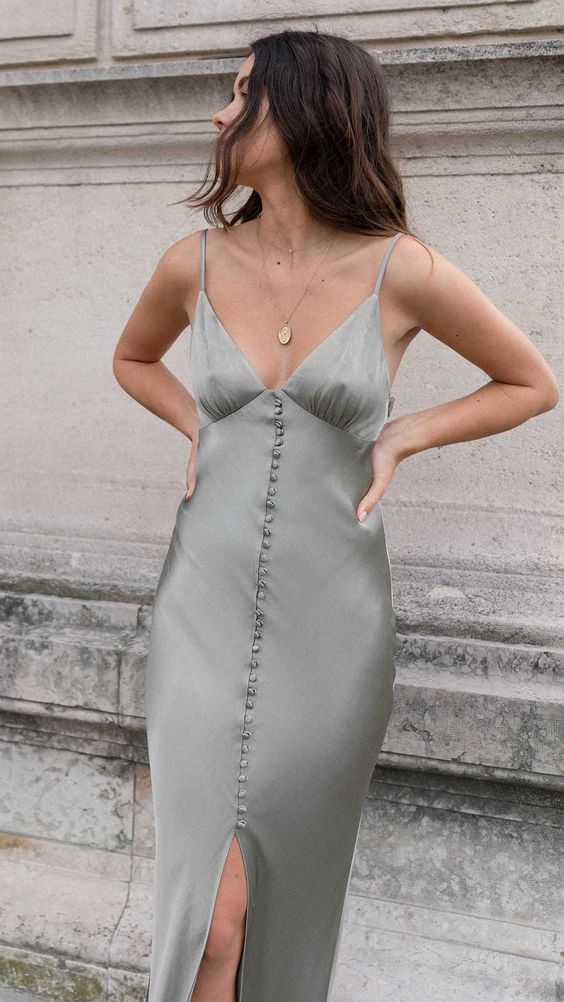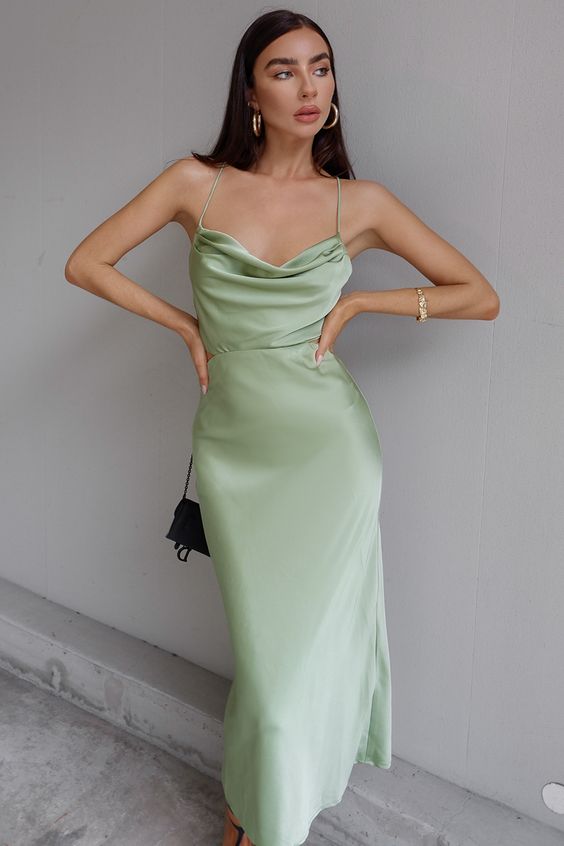Silk Fabric is an animal fiber generated by certain insects and arachnids for the construction of cocoons and webs, some of which can be utilized to make exquisite garments. Silk filaments from tamed silkworm cocoons are almost totally used in commercial applications. Silk is a natural fabric with a long history of international trade. It is noted for its luster, brilliance, strength, and durability. Silk is a prominent cloth in high-end and couture fashion design because of its high cost of production, soft feel, and attractive appearance.

Silk production and weaving have a long and storied history that is shrouded in folklore. The industry definitely began in China, where it existed before the middle of the third millennium BCE, according to native records. Sericulture quickly became an important component of the Chinese rural economy after it was discovered that the about 1 km (1,000 yards) of thread that makes up a silkworm’s cocoon could be reeled off, spun, and woven. According to Chinese folklore, the skill was given to the Chinese people by the wife of the fabled Yellow Emperor, Huangdi; the empress has been ceremonially associated with sericulture throughout history.
During the Han era, silk weaving became a major industry and one of China’s main exports. The Silk Road, a caravan route through Central Asia, brought Chinese silk to Syria and then to Rome. Sericulture was recorded by Aristotle in the 4th century BCE on the Greek island of Kos, but the technique was clearly forgotten and reintroduced into Byzantium via China in the 6th century CE. According to mythology, sericulture and silk had moved overland from China to India around 140 BCE. By the second century CE, India was supplying Persia with its own raw silk and silk textiles.

Silk is the thin thread used by silkworms to spin their cocoons. The silkworm pupates in its cocoon before emerging as a moth 20 days later. The thread spun by the silkworm’s spinning glands is the finest and strongest natural fiber on the planet. Silk is a protein fiber, which means it has a chemical composition that is quite comparable to human skin. As a result, silk is an excellent “second skin.”
So, what is it about silk that makes it so desirable for clothing? Silk Glistens: Colors shine and take on a glowing quality because of silk’s distinctive gloss. Silk’s glistening isn’t the only thing it has going for it. Silky Touches: Silk has a supple and delicate flow due to its exceptionally fine and smooth fiber structure.
Silk acts as an insulator: Silk is both chilly and warm at the same time. Silk clothing is ideal for both summer and winter. Silk may be worn as a second layer beneath a sweater to keep you warm without becoming too heavy. It can absorb up to 30% of its body weight in water without becoming soggy. Silk absorbs sweat while allowing your skin to breathe. Silk is beneficial to your health.
Silk lasts a long time: Silk, despite its delicate appearance, is a tough material. Its smooth surface repels dirt and odors well. Silk resists wrinkling and tearing and dries rapidly.
Silk is hypoallergenic and non-toxic: Silk is the most hypoallergenic of all materials due to its protein structure. This implies the wearer is less prone to experience allergic responses. Silk can be a lifesaver for people who suffer from skin allergies.
A sign of Luxury: Silk has long been associated with royalty, with princesses wearing silken robes and noblemen wearing silken capes. Chinese poets spoke about the harmonizing qualities of silk clothes over 2000 years ago. Silk is wrinkle-resistant, lustrous, hypoallergenic, and simple to maintain. Other fabrics can only claim these characteristics once they’ve been treated with chemicals.

Silk is mostly utilized in clothing and home things, but it’s also used in unusual places like bicycle tires and pharmaceuticals. Because of its absorbent nature and ability to wick moisture, silk is ideal for summer clothes, but it is also a winter essential because of its low conductive characteristics. Here are a few of the material’s various applications. Bridal and formal gowns: Silk is a popular fabric for gowns and dresses because of its lovely flow and the long floats of yarn on one side, which gives it a fancy, shiny appearance. Scarves and ties: The material’s durability and color subtleties make it excellent for accessories. Many high-end ties are constructed of strong silk, which allows for intricate patterns, vibrant hues, and long-lasting durability. Silk is also an excellent material for scarves, as it is both decorative and warm. Upholstery: Silk is used to cover furniture and pillows, and it provides a long-lasting coating due to its strength and resilience. Tires for bicycles: Because of its lightness, resilience, and flexibility, it is sometimes utilised in tyre casings. Because silk is costly, the casings can also be made of nylon or cotton. Sutures used in surgery: Because silk is a natural substance, it offers a wide range of medical applications. The substance has no immunological reaction and cannot be absorbed by the human body.
Mulberry Silk is the most popular silk in the world, accounting for over 90% of all silk produced. It is so popular because the mulberry silkworm Bombyx mori produces it, which is regarded to be the greatest quality silk. Although Mulberry Silk is the most well-known, many kinds of Mulberry Silk are available. Mulberry silk has the distinct advantage of being 100 percent natural, odorless, and hypoallergenic. Mulberry silk includes sericin, a natural protein that lessens the likelihood of an allergic reaction.

Many spider species create silk to weave webs and encase their prey, as is well known. The qualities of Spider Silk could be highly valuable for us humans as well as being a very practical material for spiders. Spider silk is extremely robust, and it is stronger than steel in terms of weight. Spider silk is five times stronger than steel of the same diameter in terms of strength. A single pencil-width strand of spider silk has been said to be capable of stopping a Boeing 747 in flight, and spider silk is almost as strong as Kevlar, the toughest man-made polymer. It has a finer texture than a human hair.

Tussar Silk is generated by numerous species of silkworms in the moth family and is naturally gold in colour. Silkworms often dwell in trees in untamed woods, and the silk is primarily harvested in China, India, Japan, and Sri Lanka. Tussar Silk is often thought to be more textured than Mulberry Silk, which means it feels less soft overall. However, the major reason we don’t use Tussar Silk for our beds at Gingerlily is because it isn’t as durable as Mulberry Silk. Nonetheless, it is still utilised in clothing and linens all throughout the world. It’s very widespread in the creation of women’s sarees.

Sea Silk is a form of silk that is exceptionally fine, rare, and hence expensive. Most silks have a history in the east, in nations like China, India, Thailand, and Bangladesh. Sea Silk, on the other hand, was initially created in the Mediterranean region. Sea Silk is created by a specific type of ‘bivalve’ mollusc known as the ‘Pinna nobilis.’ It is not generated by land species such as spiders and worms, but rather by a specific type of ‘bivalve’ mollusc known as the ‘Pinna nobilis.’

Pure satin is a highly costly cloth with a luxurious look and feel, oozing grandeur. The glossy, gleaming surface is very smooth to the touch and has a captivating gleam. Unlike inferior polyester satins, which collect static electricity, silk satin does not cling. Silk satin is significantly superior, and it is a favorite choice for evening gowns and bridal attire to offer a sense of richness and glamour.

Muga Silk comes from the Indian state of Assam and is recognized for its natural golden color. This silk-blend has a long history and was traditionally chosen by Indian royalty. Muga Silk is manufactured by silkworms, just like Mulberry Silk, however, these silkworms are special due to their location in Assam, and they are also a specific variety of silk moth that eats only scented som and small plants.

Eri Silk is derived from a caterpillar species prevalent in North East India, as well as portions of China and Japan. Because of its thermal capabilities, this silk can keep you warm in the winter and cool in the summer. However, because it is elastic and heavier than other silks, it is not often used in fabric manufacturing.
